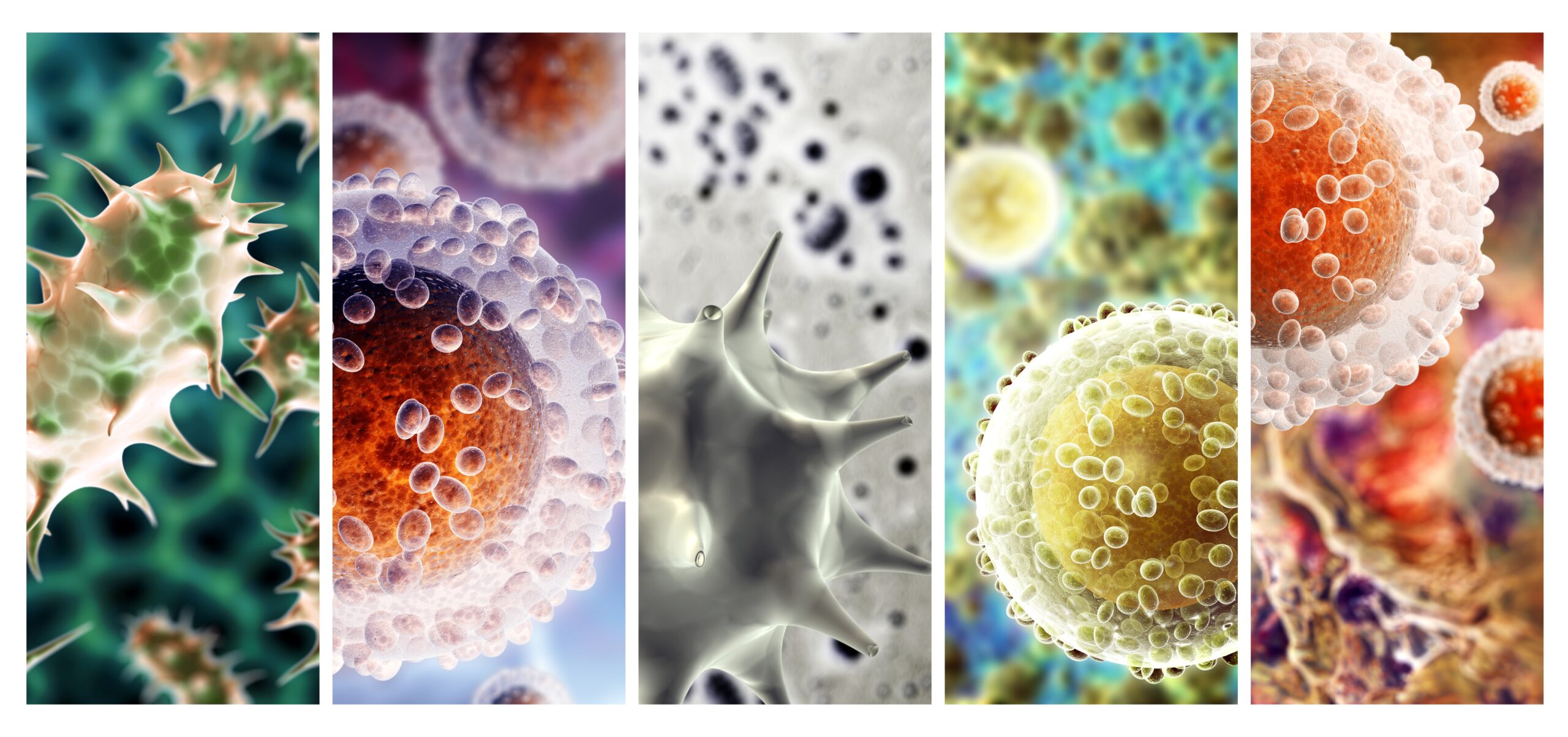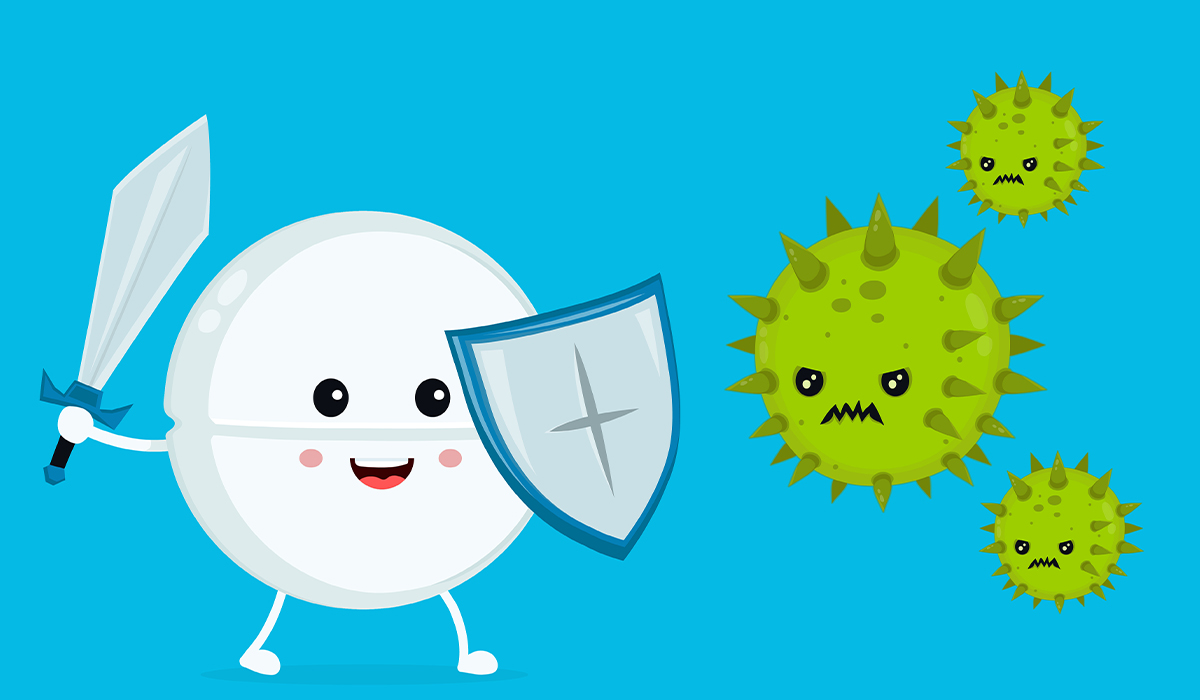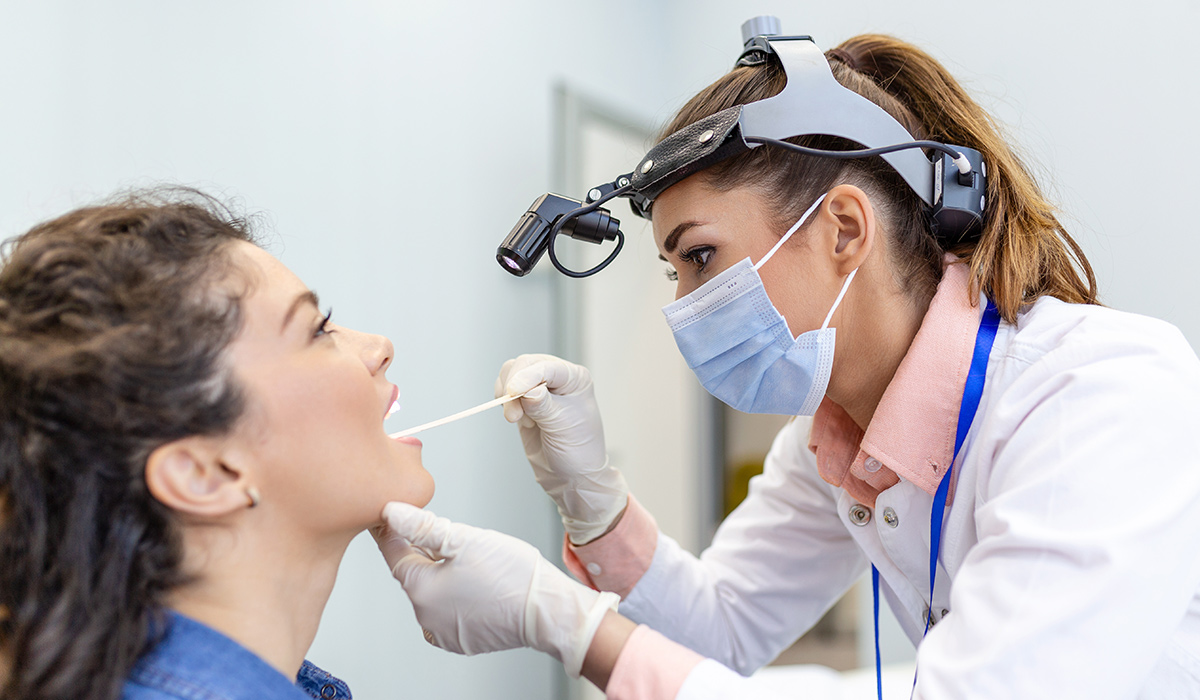Pathogens are germs that can make people sick once they enter the body. This group includes viruses, bacteria, and other tiny invaders that cause illness. Pathogens are mainly sorted by whether they can live on their own. We then distinguish pathogens:
After infection, the symptoms may be caused by pathogens or the host’s body response.
Humans live with microorganisms in a close relationship. They are part of the human body's normal flora found in certain body areas such as the skin, large intestine, vagina, and mouth. Every day, you have contact with various viruses, which most don’t cause any symptoms. Pathogens are different than your normal flora. Microorganisms that live inside your body only cause problems when your immune system is weakened or when they move to a part of the body that should be sterile. On the contrary, pathogens have developed mechanisms that enable them to cross the body’s defense mechanisms and invade the body.
To survive inside their host body and multiply, pathogens need to be able to colonize the host, avoid defense mechanisms, and exit to spread to another host.

There are several types of pathogens![]() . The main five groups include:
. The main five groups include:
Bacteria are the smallest living creatures known to man. They are single-celled microorganisms that can cause various infections in humans. The bacteria's cell walls may have different thicknesses, which determines the properties of these organisms and their different sensitivity to drugs. Bacteria are divided into two groups:
Most bacteria are heterotrophic organisms, meaning they do not produce food but need other organisms to nourish themselves. Most bacteria use dead matter for this purpose. Others draw food from the bodies of other organisms (plants and animals), causing diseases in them.
Bacteria respire in aerobic or anaerobic conditions. Aerobic bacteria obtain energy only in the presence of oxygen, while anaerobic bacteria obtain energy in the anaerobic decomposition of sugars, i.e., fermentation. Depending on the type of bacteria (aerobic or anaerobic), different antibiotics kill them.
The types of bacteria include:
Viruses are microscopic pathogens that can infect humans, animals, plants, and bacteria. Typically, each virus has its specific host. In humans, viruses can cause a variety of diseases, including:
A virus is not considered an organism since it cannot live and reproduce independently. It carries the genetic information![]() coated in the protective capsid, which is used as specific instructions for making more virus copies after entering its host cell. Those pathogens can survive outside the host’s body until their protective coating breaks.
coated in the protective capsid, which is used as specific instructions for making more virus copies after entering its host cell. Those pathogens can survive outside the host’s body until their protective coating breaks.
Various types of fungi cause fungal infections. Typically, it affects skin, nails, hair, and mucous membranes. However, fungal infections may happen in any part of your body, including the lungs, throat, and other organs. You’re at a higher risk of fungi infection if your immune system is severely weakened, for example, due to HIV infection or after cancer treatment.
Fungal conditions![]() include:
include:
Protozoa are a large group of single-cell organisms. Not all protozoa are dangerous, but some can cause diseases in humans. Common protozoa infections include:
Some worms can cause diseases in humans. The most common ones include:
Those worms![]() live in the intestine and are parasites, meaning they survive inside the host’s body.
live in the intestine and are parasites, meaning they survive inside the host’s body.
Transmission of pathogens to the human body occurs through various routes. Most pathogens affecting humans spread through:
Some pathogens may be transmitted through several routes. For example, HIV spreads through blood but also through sexual contact and from a pregnant mother to a fetus.

Pathogens are responsible for countless human diseases. Some of the most significant ones are described here.
Strep throat is an infection caused by a pathogen called Streptococcus pyogenes (or group A Streptococcus![]() ). These germs get passed around when someone who has the infection sneezes or coughs, sending tiny drops of spit into the air. If these spit drops land on or get into someone else's mouth, nose, or eyes, that person can get sick, too. This sickness is very easy to catch.
). These germs get passed around when someone who has the infection sneezes or coughs, sending tiny drops of spit into the air. If these spit drops land on or get into someone else's mouth, nose, or eyes, that person can get sick, too. This sickness is very easy to catch.
Symptoms of strep throat may include:
Strep throat is more common among young children. If left untreated, it can lead to complications such as rheumatoid fever or kidney inflammation.
A pathogen called Staphylococcus bacteria![]() causes staph infection. These bacteria are commonly found on the skin or nose of many humans. Usually, they don’t cause any problems, but when the germ invades deeper parts of the skin and body, it may cause severe conditions.
causes staph infection. These bacteria are commonly found on the skin or nose of many humans. Usually, they don’t cause any problems, but when the germ invades deeper parts of the skin and body, it may cause severe conditions.
Staph infections have a wide range of types. Those include:

RSV is a respiratory syncytial virus, a pathogen that causes respiratory infections, including bronchitis and pneumonia. In adults and older children, RSV infections are usually mild and imitate the common cold. However, RSV can cause serious illnesses, and those at risk are primarily infants, especially premature babies, the elderly, those suffering from chronic diseases, or those with a weakened immune system.
RSV infection![]() occurs through droplets, meaning an infant can be infected when a person carrying the virus sneezes or coughs. In adults, the pathogen typically causes relatively mild flu-like symptoms. Unlike adults, children are much more vulnerable to the spread of infections and the development of bronchitis and pneumonia. In the case of infants and small children who are unable to describe their symptoms on their own, the following symptoms may most often be observed, indicating the development of pneumonia:
occurs through droplets, meaning an infant can be infected when a person carrying the virus sneezes or coughs. In adults, the pathogen typically causes relatively mild flu-like symptoms. Unlike adults, children are much more vulnerable to the spread of infections and the development of bronchitis and pneumonia. In the case of infants and small children who are unable to describe their symptoms on their own, the following symptoms may most often be observed, indicating the development of pneumonia:
Pathogens called coronaviruses are a family of viruses that cause respiratory system infections. A new sprain of those germs developed in 2019, which spread throughout the world, leading to the disease called COVID-19. It is believed that most human infections occur primarily through droplets when an infected person coughs or sneezes. The pathogen can also be transmitted when a person touches a surface or object with the virus on it (e.g., saliva of a sick person) and then touches their mouth, nose, or eyes. However, direct contact with an infected person is the main transmission route of SARS-CoV-2.
The symptoms vary from person to person. Some people may not develop any symptoms, meaning they are asymptomatic. Symptoms of infection may include:
UTI, short for urinary tract infection, happens a lot and can be caused by different germs including bacteria, fungi, and viruses. It's a common kind of infection. The common agents causing it include:
The most usual symptoms of UTI include constant urge to pee, burning feelings during urination, cloudy urine, blood in pee, and pain in the lower abdomen.
Table of Contents

Epstein Barr Virus is a pathogen that causes infectious mononucleosis and many other diseases. Learn about the risks associated with… read more »

Viruses are microscopic infectious agents that can only replicate inside the living cells of a host organism. They are not… read more »

The Ebola virus continues to pose a threat to those living in Africa. Learn about the risks associated with Ebola… read more »

Discover Sore Throat Remedies for quick and effective pain relief. Many herbs and foods have healing properties. Learn how to… read more »

West Nile Virus is a threat not only to Africans. Fortunately, most patients pass the infection mildly, but there are… read more »

A viral infection occurs when a virus invades the body and begins to multiply. Viruses are tiny infectious agents that… read more »

Strep throat is a bacterial infection that affects the throat and tonsils. Around 11 million people are infected with this… read more »

Herpes is a viral infectious disease that most often affects the lip area. Herpes virus infections are common. What does… read more »

AIDS is a disease caused by HIV. This virus attacks the cells of the human's immune system, making them unable… read more »